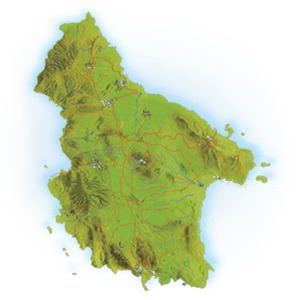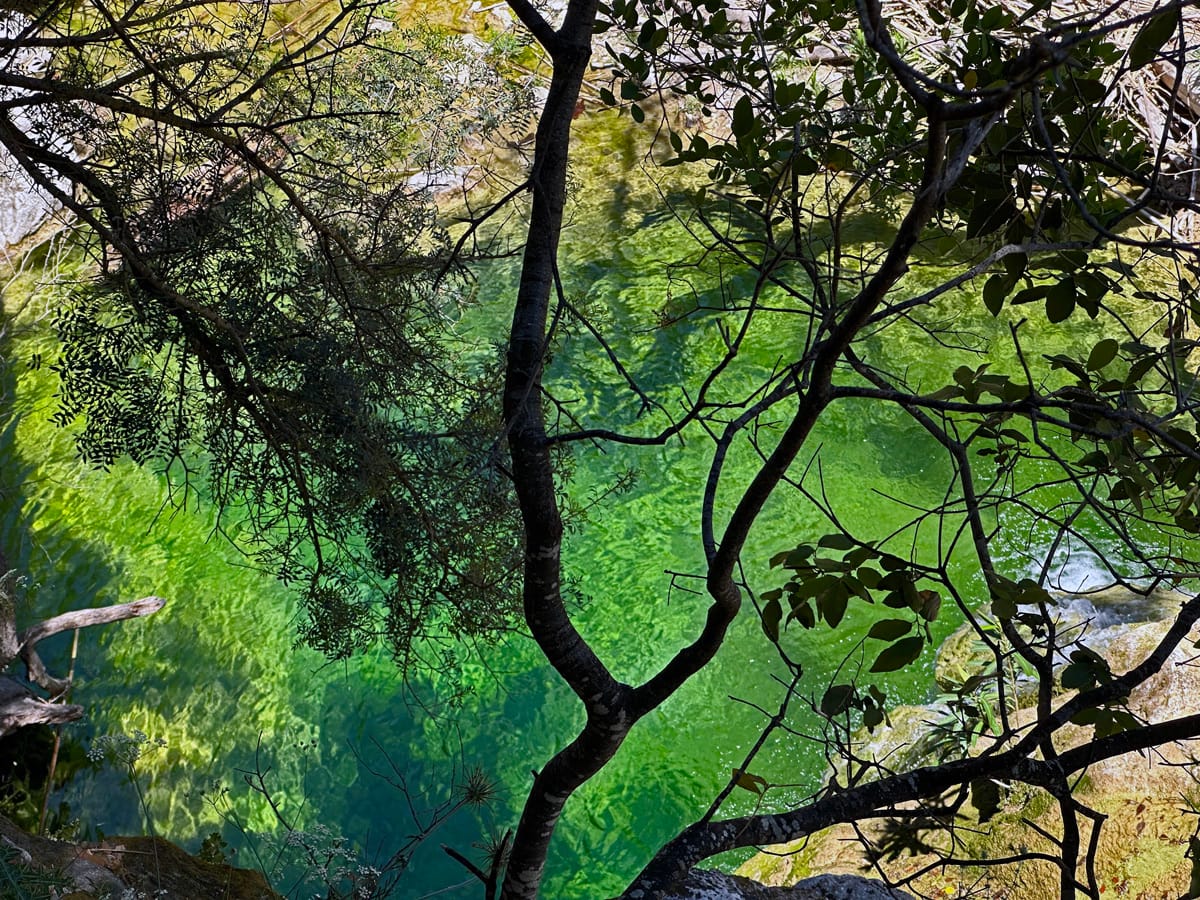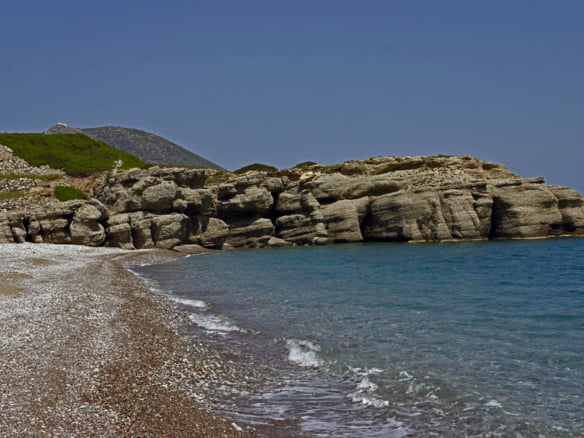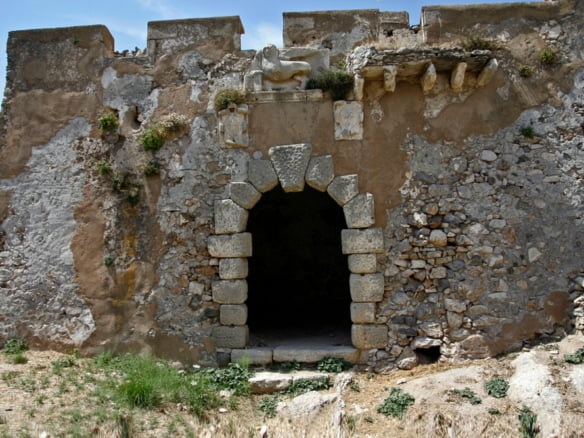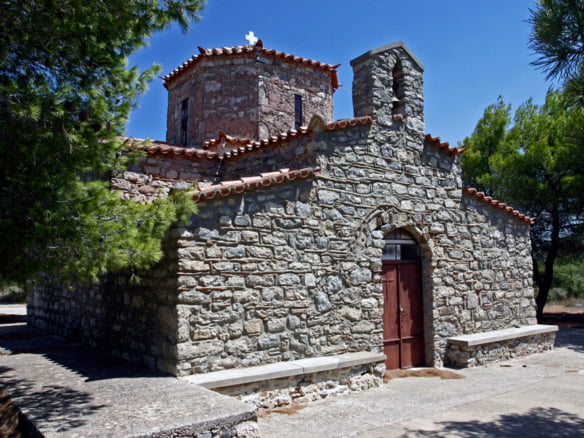A dive into the secrets of time and water
In one of the most blessed spots on Kythira, where the stone speaks the language of water and the light filters through the thick shade of ancient plane trees, a unique journey begins: the descent to the Mills of Mylopotamos. It is a route that does not simply follow geographical coordinates, but takes you back in time, to a time when life was slower, more silent, more connected to nature.
Hidden in a verdant ravine in the northwestern part of Kythira, Mylopotamos is one of the most enchanting destinations on the island, combining unparalleled natural beauty and intense historical memory. Mylopotamos, one of the oldest villages on the island, hides a treasure in its heart that is difficult to imagine from above. Its old stone square, with its humble beauty and the cellaring of the historic fountain, acts as a gateway to a fairy-tale world. From here begins a cobblestone path that descends like a river through the ravine, leading the visitor to a setting that seems to be taken from a period novel or an ancient fairy tale.
The route starts from the center of the traditional village of Mylopotamos, located in the center west side of Kythira, next to the square with the ancient plane trees and the old fountain with the famous lion. From there, a cobblestone path leads to the lush valley that hosts the famous ravine with its 22 watermills — one of the most important water-powered craft centers of the island during the period from the 17th to the 20th century.
As the visitor descends, he is greeted by the enchanting melody of the river waters that gush from many springs and form natural ponds and waterfalls. The most famous of these water wonders is the Neraida (or “Fonissa”) waterfall, which falls spectacularly from a great height amidst lush vegetation, giving the place a mythical dimension. The shade of the huge plane trees, the wildflowers, the ferns and the mosses create a sense of coolness and serenity that seems to stop time.
Nature here is not just present, it is dominant. The waters flow with persistence, springing from springs that never dry up, forming streams, small peaceful ponds and waterfalls that fall gracefully between plane trees, sycamores, ferns and shady mosses. The coolness is almost visible, an invisible breeze that embraces the visitor and immerses him in a sense of purification. Among these waterfalls, the first in the series stands out, the imposing waterfall of Neraida — or “the Fonissa”, as the locals know it. The water falls from a great height, creating an emerald pond at the foot, while the cave behind it gives rise to legends of lost souls, elves and secrets of the forest.
As you move through the ravine, the landscape changes pace but never character. Dozens of old, stone watermills stand scattered to the right and left of the path. Most are now silent, covered in lichen and rooted in time. But their form, the details on the chiseled stone walls and the traces of the mechanisms that once turned with the power of water, tell the story of a society that knew how to live off the land with respect and wisdom. From the 17th to the 20th century, the watermills of Mylopotamos were not just machines — they were the heart of local life. Here the inhabitants milled their wheat, exchanged news, learned the weather and measured the seasons with the sound of water and the rhythm of the stone.
This ravine was never just a place of work; it was also a place of memory, a place of meeting and coexistence from different regions of Kythera. Over the waters, small bridges made of local stone still stand, connecting banks, but also seasons — as symbols of the connection of man with the environment. Some are single-arched, with low handrails and aged treads. As one crosses them, one feels that they still carry memories of older generations: old men with sacks, children playing, women carrying water in pitchers.
The inhabitants of Mylopotamos and the surrounding villages ground grain, produced flour and maintained an entire micro-society around the operation of the mills. Each mill had its own “mold” — the owner or the village miller — and each visitor had the right to use the water at specific times. An ingenious system of canals, water tanks and wooden pipes ensured their uninterrupted operation.
The bridges that cross the river add another touch of picturesqueness. Made of stone, with a curved shape, they were important points of passage and communication between the two sidesof the ravine. Passing them, one feels as if they are traveling back in time, to times when people’s daily lives were closely tied to nature and the seasons.
The route, which lasts about 2 hours at a leisurely pace, can be continued to the last mill, known as the Mill of Fabriki. There, the landscape opens up slightly and offers a space for reflection, like a ceremonial closing of a narrative. From there, the ascent back to the village is done with a different perspective: the soul full of images, the memory scented with forest, water and a little nostalgia for a more authentic life.
The Mills of Mylopotamos are not only one of the most beautiful sights of Kythira, it is an experiential experience. It is a reminder that nature can be a partner and not just a backdrop, that human presence once left a faint mark, and that true beauty is often found on the quietest, most forgotten paths. Mylopotamos is not just a place of natural beauty. It is a living museum of traditional technology, a hymn to sustainability and human ingenuity. For the visitor, it is an ideal destination for hiking, photography, quiet exploration and contact with the past of a place that knows how to move.









